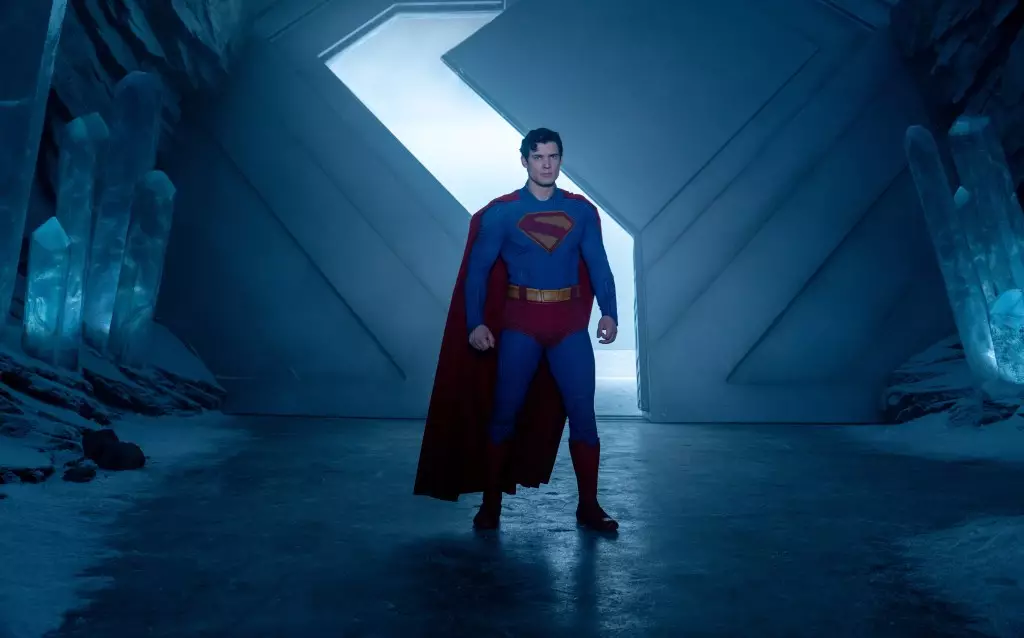The reception of Warner Bros. and DC’s latest Superman film signals more than just box office numbers—it heralds a potential turning point for the franchise and superhero cinema overall. With a staggering opening of over $40 million within the first two days across North America and international markets, the film demonstrates an undeniable global thirst for fresh takes on the iconic hero. This isn’t just about the numbers; it’s a reflection of audience eagerness for innovation and storytelling that breaks free from formulaic conventions. The international debut alone, spanning 78 territories, reveals a broad and eager audience that still craves the timeless hero’s journey, but with a modern, possibly edgier, and more compelling touch.
What truly stands out is how this film’s performance defies typical market expectations. Korea, often considered a cautious market for Western blockbusters, thrived with a No. 1 opening comparable to other major franchises like Guardians of the Galaxy. France, a historically significant market, posted a promising start that exceeded previous MCU and Sony offerings. Italy and Indonesia also posted notable openings, which shows that the appetite for Superman remains robust across diverse regions, perhaps even expanding into markets less traditionally receptive to Western comic book adaptations. These signs suggest that the film’s global success could redefine the potential reach of superhero films, inspiring studios to reconsider international marketing and release strategies.
Star Power and Market Dynamics Fuel Early Success
The film’s international performance is bolstered by a combination of strategic release timing and star power, but ultimately, its success reflects something deeper: a renewed interest in storytelling authenticity within the superhero genre. The debut in multiple markets was well-orchestrated, with notable performances such as the overwhelming 78% market share in the Philippines. These high market shares indicate that audiences aren’t just turning out for the spectacle but are genuinely connecting with the reimagined narrative and character portrayal.
Furthermore, the film’s box office share from premium formats like IMAX (18%) underscores a desire for immersive superhero experiences. This is a testament to the film’s technical quality and storytelling ambition, which seem to elevate the genre into a more cinematic, less disposable category. The market’s embrace of this approach suggests that audiences want more than just predictable blockbuster fare; they crave high-quality, emotionally resonant, and visually stunning stories.
However, most critically, the film’s early success isn’t solely driven by fan loyalty or brand recognition—it also signifies a strategic victory for DC and Warner Bros. in redefining their superhero narrative. The focus on diverse international markets demonstrates a commitment to broadening the franchise’s appeal, and early indicators suggest this risk could pay substantial dividends. The global numbers, especially in territories like Brazil and Australia, are not only strong but also surpass expectations set by previous DC or Marvel films in comparable time frames.
Challenging the Future of Superhero Cinema
What makes this triumph particularly compelling is what it might portend for the future of superhero movies. Traditionally, comic book films have been criticized for formulaic storytelling and reliance on box office veterans. Yet, this Superman film, directed by James Gunn—a filmmaker renowned for blending humor, depth, and visual innovation—appears to challenge those conventions. Its strong international performance indicates that audiences are receptive to fresh approaches and nuanced storytelling, possibly signaling a shift away from the CGI-heavy, predictable narratives to more character-driven, emotionally engaging films.
This success also raises questions about the sustainability of the current cinematic landscape. If the film keeps up its momentum into the weekend, it might set a new benchmark for not just DC, but for the industry’s understanding of what global audiences desire from superhero cinema. Will studios begin investing more in diverse storytelling styles, international casting, or culturally relevant themes? The early numbers suggest yes, and this could have long-term implications on how such films are produced, marketed, and received.
In essence, Warner Bros. and DC’s Superman is more than just a blockbuster; it’s a bold statement that superhero movies can grow beyond their traditional limits. It highlights the power of storytelling, cultural resonance, and strategic international collaborations. If this momentum continues, it could pave the way for a new era—one where superhero films are not just crowd-pleasers but cultural phenomena that reflect a broader, more interconnected world audience.

